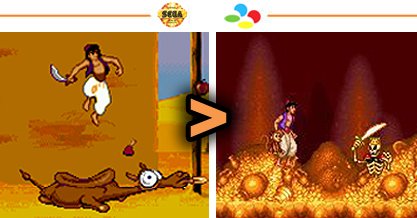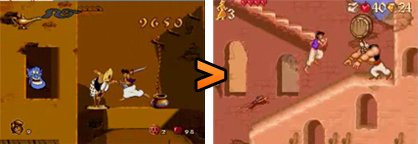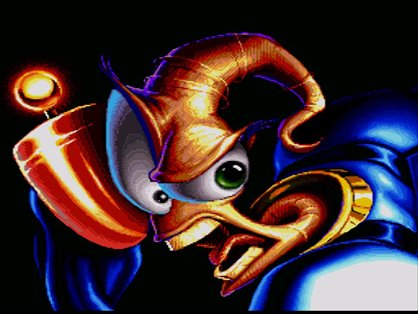The 7 most beautifully animated 2D games
Are games art? Who knows – at least these look the part
There’s something very special about the process of old-fashioned, frame-by-frame, 2D animation. In the old days, the only way to get your animated character to wave his or her arm was to spend hours upon hours painstakingly crafting each frame and constantly readjusting your work to make sure everything flowed correctly. Now you just set a couple of keyframes and let a computer do it all for you.

Above: This took us 10 minutes
Compare our stupid little stick figure to the works of Don Bluth, Hayao Miyazaki or the Disney animators of the last few decades. These animators are rightly labeled as geniuses: they’re able to turn a series of static images into a living, breathing world, filled with characters with fluid – yet subtle – movement. Animation is the art of motion, and to break down our gestures into tons of tiny frames takes a level of observation and patience that few can really appreciate.
Above: Wow, did Spike Jonze see this?
Videogames add another layer of complexity to the art of animation, as most games don’t flow in a predetermined, linear fashion. Here are the games that most impressed us with the quality of their 2D animation while remaining fully interactive. Some of the games use the old-fashioned hand-drawn cel animation style, and some of them rely on pixels, but they’re all flat, all cartoony, and all of them are as fun to look at as they are to play.
Sure, we’ve been over this before - The SNES version of Aladdin was developed internally by Capcom (which then owned the rights to develop and publish all Disney games on SNES), while the Genesis version was developed by Virgin Interactive, with the help of the Disney animators who worked on the film. Now, we don’t mean to disrespect Capcom’s efforts (Aladdin on SNES is still among the best platformers on the system, and truth be told, many of us at GR prefer it for its gameplay), but you can’t deny that the Disney magic makes a big difference. Back-to-back time!


Above: Not that Aladdin uses a sword much in the movie, but it’s certainly more badass than Mario-ing people to death
Weekly digests, tales from the communities you love, and more
The swirls of smoke that erupt from breaking lamps or from getting too close to hot coals, the fluidity of the climbing animation, and (of course) the pink-hearted boxer shorts make the visuals in the Genesis version really pop. Is it because of the use of scanned animation cels as opposed to pure pixels? Maybe, but regardless, you have to give credit where credit is due for Virgin’s impressive line of 2D Disney-licensed games that came out in the ‘90s, includingThe Lion King,Hercules and even obscure games like Maui Mallard in Cold Shadow – there was a time when a Disney tie-in game was a thing to be excited about.

Above: Not this
We could just turn this list into a collection of all our favorite Disney games, but Mr. Antista’s covered that all before. There’s got to be some non-Disney stuff that looks good, though, right? Well, how about this?

Above: Will f*** you up
Designers David Perry and Doug TenNapel are extremely well-known figures in the gaming world (incidentally, David Perry worked on the Genesis Aladdin, too), and Earthworm Jim the character is such a recognized fan favorite that his voice actor, Dan Castellaneta, isn’t known for anything else.

Above: No, wait, we take it back. He also voiced Boogerman
There’s certainly something to be said for fluid, hand-drawn animation – it can turn even a cold, corporate advergame like Cool Spot (Perry’s prior effort) into a beloved retro classic. Everyone knows the Earthworm Jim series for its over-the-top, cartoony style – and if you judge a game based on the quality of its idle animations, Earthworm Jim 1 and 2 are bona fide artistic masterpieces.
Above: Earthworm Jim: making not playing a game fun since 1994
David Perry’s career as a game director effectively faded out after he worked on Enter the Matrix, a game that a surprisingly large number of people both bought and hated. He now lends his name to David Perry’s Industry Map, a handy little site where you can enter a game’s name and find out where in the world it was made.

Doug TenNapel, on the other hand, went on to create The Neverhood and sequel Skullmonkeys, two notably well-animated claymation games. The Neverhood borrowed gameplay elements from Myst and traditional point-and-click adventures, while Skullmonkeys was simultaneously reminiscent of Donkey Kong Country, Oddworld: Abe’s Odyssey, Earthworm Jim and Tomba!, as well as The Nightmare Before Christmas and Mystery Science Theater 3000. Yeah, it’s kind of a weird game.


